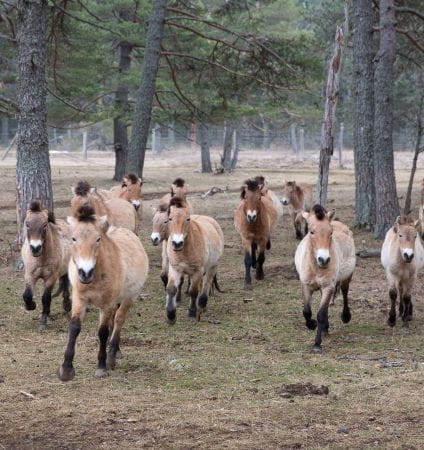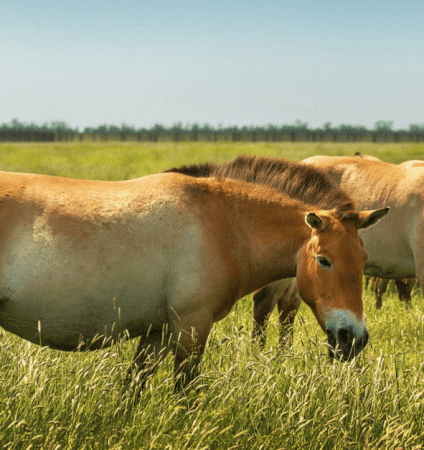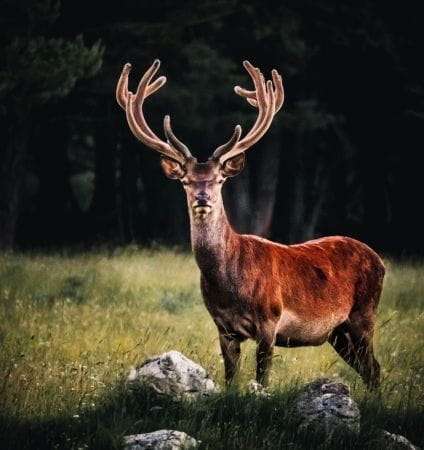If, today, the Cro-Magnon Man came back to the Reserve of th Monts d’Azur , he would not be too out of place. He would find there a large part of the fauna that he used to rub shoulders with and that he represented on the wall of the caves shortly before the Neolithic: the bison, the wild horse, the deer, the wolf, the lynx, the chamois, … The European bison and the Przewalski horse are certainly the two species most present in cave art. Outstanding artists, prehistoric men have made striking paintings of truth. For 20,000 years, in Lascaux, Niaux, Chauvet, Combe-Nègre, Marsoulas, and hundreds of caves, the prehistoric man adorned the walls of horses and bison, but also deer, ibex , aurochs …. Our concern for recovery has not been to reintroduce mammoths, lions and rhinos in La Réserve!
Cave of Niaux (Ariège) Magdalenian period (-13000 years)
Here is a Przewalski horse drawn on a wall of the Black Salon of the Niaux (Pyrenees) cave, 13,000 years ago, during the Magdalenian period.
It has the same characteristics as the horses in our Reserve: small size, sparsely covered tail, erect mane, and characteristic V-shaped spot flattened on the neckline. Having never been tamed by man, this equine has kept its original appearance. The cave of Niaux offers 29 paintings of horses and 54 bison. Dangerous animals (lions, rhinos, mammoths) are, however, poorly represented. The resemblance between our bison and those represented on the walls of Niaux is also striking.
Cave of Lascaux, Magdalenian or Solutreen period (-15 to - 18000 years)
In Lascaux, (-17000 years), the horses and bison of Europe still reign on the walls. Were the painters the shamans of the tribe? The prehistorian Jean Clottes firmly believes it.
The buffalo hunt In the well scene, a buffalo seems to lose his entrails facing a man lying on the ground. Is he hurt? Hunting scene or allegorical scene?
Here, deer tailing each other , perhaps crossing a stream
Chauvet cave (ardèche) Aurignacian period (-30 000 years)
Przewalski’s horses also adorn the walls of the Chauvet (Ardèche) cave, one of the oldest in the world. The carbon-14 analysis gives -31,000 years for this wonderful ensemble.
Aurignacian painting shows exceptional mastery.
This bison from the Chauvet cave dates exactly from 30 to 340 years BC
More interesting articlesDiscover the Reservation

The Monts d'Azur Reserve and rewilding

Przewalski's horse to conquer Chernobyl
